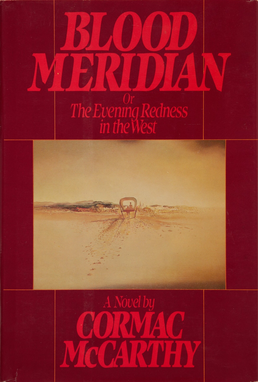Part 23
byPart 23 begins with the protagonist traveling across the desolate, windswept plains of north Texas during the harsh winter of 1878. He sets up camp near the Double Mountain Fork of the Brazos River, where he encounters an old hunter who shares his reflections on the once-thriving buffalo herds that once roamed the area in abundance. The hunter speaks mournfully of how the buffalo, once a symbol of power and resilience, were systematically destroyed by the overzealous hunting efforts of men seeking profit and sport. He recalls the grand hunting expeditions that took place across the plains, now abandoned and left to gather dust in the memories of a bygone era. The imagery of buffalo carcasses strewn across the land, left to decay under the relentless sun, serves as a poignant symbol of the reckless destruction of nature, as flies swarm around the bones and wolves pick through the remains.
As night falls, the protagonist rides through the eerie and desolate landscape, passing by the remnants of the buffalo herds. The bones that litter the ground tell the grim story of what once was—a thriving ecosystem now reduced to a collection of lifeless remains. Along the way, he encounters bone-pickers, men who labor tirelessly to gather what little is left of the buffalo, collecting bones and other parts to sell in an attempt to survive. The grim nature of their work stands in stark contrast to the beauty and silence of the plains, which seem to mourn the loss of the animals that once inhabited them. The protagonist moves further into the heart of the desolation, encountering a group of ragged individuals who beg for tobacco and whiskey, revealing their hollow, worn-out lives in this unforgiving land. The strange and unsettling sight of a necklace made of human ears raises suspicion, prompting an interaction full of tension as the protagonist and the group exchange increasingly hostile words. The grotesque trophy of human ears introduces an element of mystery, adding to the dark, violent undertones of the narrative.
The conversation grows increasingly tense as the group’s young member speaks out, blending a strange mixture of bravado and vulnerability. Under threats and jabs from the protagonist, the youth becomes defensive, while the protagonist reveals his knowledge of the origins of the necklace made from human ears. This exchange exposes the deep-rooted cruelty and violence that has shaped the lives of these people, their actions driven by survival in a world devoid of mercy. The tension between the boys continues to escalate, as the protagonist tries to challenge their assumptions about the value and significance of the ears. In the end, the youth is shot dead in a tragic turn of events, adding another layer of grief to an already desolate landscape. The violent confrontation illustrates the harsh realities faced by the orphaned children and others who call this barren land home, showing how survival often requires sacrifices of humanity.
After witnessing the aftermath of the tragic death, the protagonist rides on, continuing his journey across the bleak plains, eventually arriving at a dark, dimly lit town. The flickering lamps of the town offer little comfort as he seeks solace in a drink, hoping to drown out the disturbing sights and sounds of the recent encounter. It is here that he meets the Judge, a mysterious figure whose presence seems to symbolize the primal chaos and brutality that permeates the land. The Judge is an enigmatic figure who embodies the lawlessness and violence of the frontier, a person who appears both commanding and dangerous. As the protagonist enters a saloon, the atmosphere becomes chaotic and unsettling, with laughter and violence blending together in an uneasy mix. The saloon, full of rowdy patrons, presents a stark contrast between the carefree revelry of the townspeople and the underlying sense of dread that clings to the space. The chapter ends on this note of tension, where survival in the West is depicted as a constant balancing act between moments of fleeting joy and the ever-present threat of violence. The blending of merriment with an undertone of impending doom underscores the novel’s central themes of survival, despair, and the brutal reality of life on the frontier. The desolate West is portrayed not just as a physical space, but as a psychological landscape where every moment of relief is overshadowed by the harshness of the world around them.

